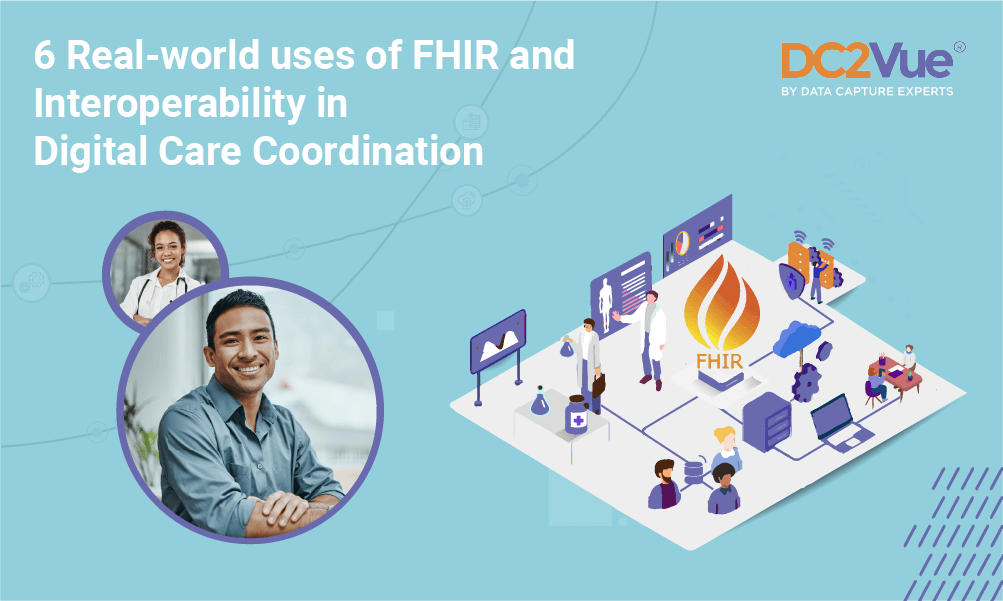Technology has quickly transformed the way that we operate in the healthcare industry. One of the most recent trends that hospitals and healthcare centers are starting to adopt is the way we handle information. More specifically, the way medical records are stored and shared.
Fast Healthcare Interoperability Resources (FHIR) is a global industry standard for the transfer of healthcare data between systems. It’s a free system that was developed to be easy to implement and also quick to learn how to use. The reason that it exists is so that healthcare information can easily and quickly be transferred. Whether it’s information about a patient to a specialized healthcare facility or even transferring data from one family doctor to another, there are many different ways that the FHIR has streamlined healthcare systems.
Data sharing like this isn’t just important for organizations either. Many people look into their records at home with cloud-based applications, and they’re able to do everything from looking at their records to booking appointments using apps. These kinds of features need access to a wealth of healthcare information, and the FHIR has made it simple for these apps to streamline the transfer of this data.
But how exactly is FHIR used in a real-world situation? What are the most popular applications of it now, and what can we expect in the future? Let’s find out.
Smartphones have quickly become some of the most important electronic devices that we carry with us today. They have transformed from simple telecommunications devices to fully-featured computers that can do everything from helping us schedule meetings to recording our sleeping habits. These days, more smartphone manufacturers are starting to look into implementing these unique healthcare features. This is slowly transforming the way that regular people access and transfer their medical data.
1. Access to personal health information on mobile devices
The rise of personal health records has given patients a lot more control over how they want to deal with certain conditions, but it’s also made it easy for them to prove that they have a certain ailment or dietary considerations. This is just a surface-level way of using healthcare information on mobile devices. In the future, we may start to see more uses of healthcare information for fitness reasons, or integration with other smartphone apps that could provide detailed nutrition recommendations or exercise reminders based on the patient’s health and body.
2. Easy healthcare record sharing
Throughout life, we’re given access to a lot of healthcare records that we might never see again unless requested. For example, if you ever have an x ray, a scan, or even a medical prescription, then you might lose the results from them unless you are diligent about storing those records. However, with the advent of digitized healthcare records and documents, it can now be a lot easier to access these records from the comfort of your own home.
Document-sharing systems are a popular real-world use of FHIR. Being able to quickly and easily request these shared documents makes it easy not only for patients to access their records, but it can also be used to share a patient’s information with an outpatient service or a different hospital should it be required.
3. FHIR is valuable for research purposes
A lot of people underestimate just how valuable medical records are in terms of medical research. Patient data can be a huge source of effective data that is extremely valuable to one’s research. Thanks to FHIR, implementation of these data-sharing services is much simpler and more lightweight, meaning it’s easy to share this important data with relevant researchers.
FHIR gives over a hundred individual Application Programming Interfaces (APIs) that can be used for sharing data over many different healthcare systems. This makes it incredibly flexible for research and data-sharing purposes, and it changes the way that this data can be integrated into a number of healthcare applications.
4. Better collaboration between health plans and providers
The fast and immediate transfer of medical data can facilitate better collaboration between health plans and providers. By taking real-time data that can be used to analyze a patient’s situation, health plans and providers can work together to provide patients with the level of care that they truly need. This leads to much more positive patient outcomes, and it boosts engagement thanks to the digitization of their records and the ease of access to them.
5. Streamlined data management with FHIR
Healthcare system data can often be cluttered and difficult to understand due to the great number of sources that it can come from. With FHIR, it’s impossible to streamline data management so that it’s easier to browse, understand, and use in the appropriate situations. For instance, claims data can easily be correlated with medical records to gain additional insight into how a patient can be treated. Prescription data is also separated, making it easy to look at and use data related to the medication that a patient could be taking.
There’s also data optimization for things like wearables that record patient data into a healthcare system, or surveys that can be used to obtain valuable research from the general public. FHIR focuses on using a standard common target data format that is secure, accurate, and free from errors, thus making it much easier to manage and access data.
6. Cooperating with care providers
Care providers often need access to a patient’s data. With FHIR-based interoperability systems, care providers have a much easier way to facilitate this process. They can easily update a patient’s data if required, they can assist with carer transitions, and it’s also easier to manage the medication that a patient is taking. These updates happen in real-time thanks to the FHIR-based systems, meaning the data can be brought in on-demand and accessed only when needed by the care providers.



